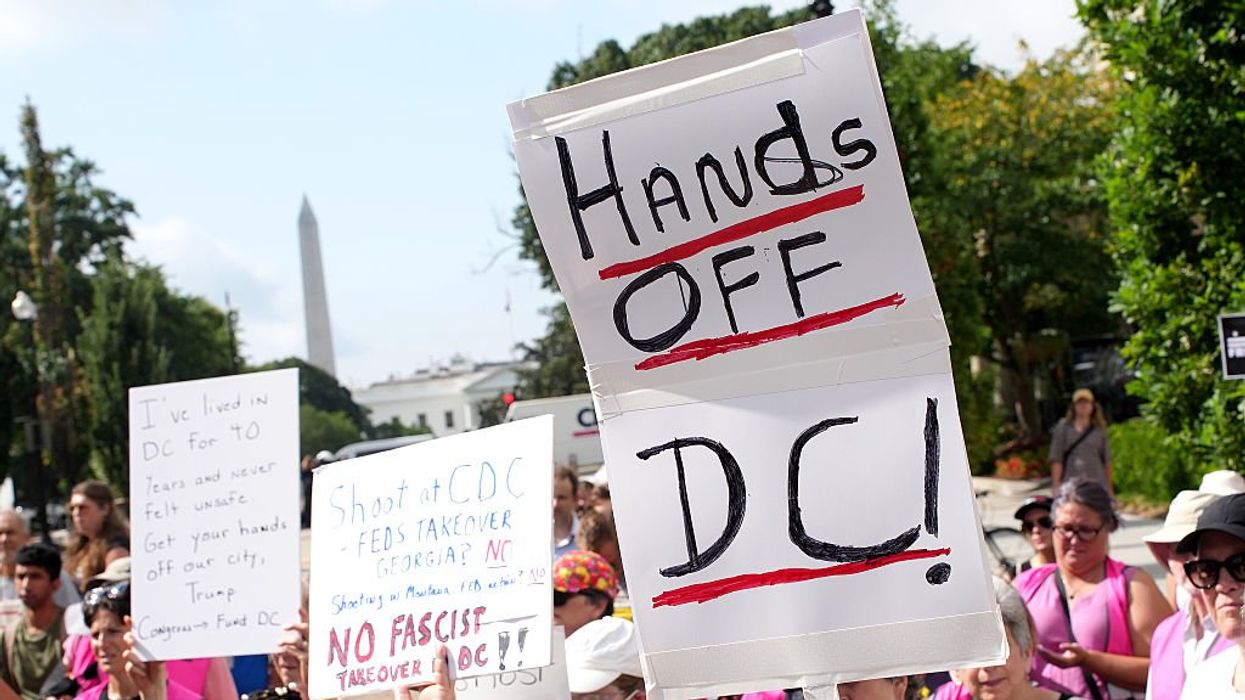Key Points:
- President Donald Trump declared a “crime emergency” in Washington, D.C. and announced that the federal government would take control of the city’s police, claiming “an increase in violent crime.”
- Official figures show that violent crime has decreased in D.C. since 2023.
- In 2024, the number of violent crimes was half of what was reported in 2019, during Trump’s first term.
- However, Washington, D.C. has ranked among the top 10 U.S. cities with the highest homicide rates per 100,000 residents since at least 2017.
President Donald Trump declared a “crime emergency” in Washington, D.C. and announced that the federal government would take control of the city’s police. According to Trump’s executive order issued on August 11, 2025, this emergency measure is necessary because “there is an increase in violent crime” in the city.
That claim is false.
Official data shows that violent crime has been decreasing in D.C.
Between 2023 and 2024, violent crime dropped by 35%, according to data from the Metropolitan Police Department.
- In 2023: 5,325 violent crimes
- In 2024: 3,469 violent crimes
This marks the lowest figure recorded in the city in over 30 years, according to the Department of Justice (under the Biden administration, January 3, 2025).
The category “violent crime” includes homicide, sexual assault, assault with a dangerous weapon, and robbery.
By August 11, 2025 (the date of Trump’s executive order), violent crime had decreased even further—by 26% compared to the same date in 2024.
From January to August 2025, fewer violent crimes were recorded than in the same period in 2024.
Looking at the total number of violent crimes in D.C. since 2017, the 2024 figure is just over half of what was recorded during 2017, 2018, and 2019 (Trump’s first three years in office).
Despite the decline in violent crime, Washington, D.C. still has one of the highest homicide rates in the country.
- In 2023: 40 homicides per 100,000 residents
- In 2024: 27.5 homicides per 100,000 residents (according to Trump’s emergency declaration)
This 2024 rate is lower than those recorded in 2020, 2021, and 2022.
Although the Metropolitan Police Department had not yet published its 2024 homicide report at the time of writing, a study by the University of Rochester’s Center for Public Safety Initiatives (February 2025) estimated the 2024 rate at 27.3 per 100,000—similar to the White House figure.
Despite the decrease, the Rochester study ranked D.C. fourth among U.S. cities with the highest homicide rates in 2024, behind:
- St. Louis, Missouri – 54.4
- New Orleans, Louisiana – 34.7
- Detroit, Michigan – 32.1
Washington, D.C., has appeared in Rochester’s reports among the top 10 cities with the highest homicide rates since at least 2017.
The White House has questioned the accuracy of D.C.’s crime statistics, citing a press report about a police commander suspended since May 2025 and under investigation for allegedly altering data.
The commander denies the accusations (made by the D.C. police union), and the outcome of the investigation remains unknown.
Editor's Notes: This article is a translation of "No, el crimen violento no aumentó en Washington D.C, contrariamente a lo que dijo Trump al declarar en emergencia a la ciudad," first published by our partners, Factchequeado.
Rafael Olavarría is a Fact-checker of politics and immigration for FactCheckeado.



















